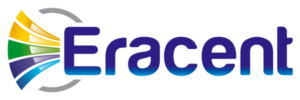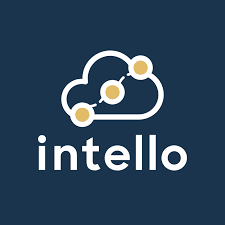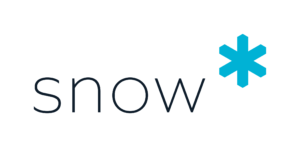SaaS Management – Market Guide
Overview
This Market Guide provides an overview of vendors and products in the SaaS Subscription Management space. The purpose is to provide you with a long-list of vendors to consider if you are in the market for such a toolset. It is non-exhaustive and is based on original research from The ITAM Review. Inclusion on the list does not mean endorsement, and no vendor has received special treatment or priority for their listing. This Market Guide is free of charge and vendors did not pay for a listing. If you are a vendor not included in the list, we will be happy to include you in a future edition. This guide was published and updated in 2019.
Market Definition & Analysis
The market under analysis is the SaaS Subscription Management market. This market is focussed on providing organisations with tools to discover, manage, and optimise their SaaS estate. Whilst some tool vendors listed in this Guide may offer solutions managing other “As-A-Service” subscriptions, the focus here is solely on Software-as-a-Service (SaaS) Subscription Management tools.
Key Findings
Since the 2018 version of this guide the market has evolved, with providers beginning to broaden their offering beyond cost management. Existing ITAM tool providers have also improved their offerings in this market. Enterprise features such as cost allocation models and automation have become important differentiators, and several vendors have strong messages regarding the Governance, Risk, and Compliance (GRC) requirements of SaaS.
Recommendations
In selecting a tool, specific consideration should be given to the following areas. These are beyond the standard due diligence approach when selecting a supplier for a service.
1. Integration requirements
SaaS Subscription Management requires new discovery and inventory techniques, particularly integration with Finance & HR systems, and vendor APIs. Check that your proposed tool integrates with your existing systems.
2. Vendor Maturity
Many vendors are still in “start-up mode” – meaning there is a dash to deliver functionality and onboard customers before funding runs out. As with any new market segment you should expect vendors to fail or be acquired. Whilst the risk is low, particularly as these are primarily SaaS services themselves, you should take into consideration the financial viability of your chosen tool provider.
3. Privacy
With many of these vendors based in the US, consideration should be given to privacy requirements, particularly with reference to the GDPR. For example, if personal use of company devices is permitted in your organisation, these tools may risk infringing the GDPR, depending on the discovery method used.
Inclusion Criteria
In compiling this list, we have attempted to include vendors from across the marketplace in terms of size, geography, and product capability. If, as a vendor, you are not listed please contact the author for inclusion in a future edition of the guide.
Product Requirements
It is recommended that the product selected is able to deliver the following benefits:
1. Discovery of SaaS spend
SaaS spend often happens via non-standard channels – for example via employee expenses or departmental budgets outside IT control. A tool should discover this spend category alongside traditional IT contracts.
2. Normalisation of Discovery data
A tool should gather data from multiple sources and normalise it to provide a single view of spend with a vendor, categorised by employee, location, department, and so on.
3. Optimisation
Optimisation features include discovery of unused or under-utilised subscriptions along with the ability to conduct optimisation opportunities through automation – for example automatically switching an employee to the right-sized subscription plan, or on/offboarding.
4. Forecasting & Vendor Management
The fragmented approach to SaaS purchasing often results in multiple contracts for a single vendor, or multiple services which provide the same function. Examples include each department having their own Salesforce contract, or the organisation using more than one web conferencing service. Tools should identify these deployment cases and provide opportunities for optimisation via co-terming and standardisation, along with forecasting to enable longer-term financial commitments.
For more on Product Requirements see our white paper – “What to look for in a SaaS Subscription Management Tool”
Vendors
Alpin
Alpin were founded in 2013 and are headquartered in Boulder, Colorado, USA. Alpin’s background is IT Security, having developed a password-less authentication product, and this informs their approach to the SaaS Optimisation market.
Alpin discover SaaS Expenditure through integrations with Expenses, Accounting, APIs, Proxies, Firewalls, Email, and a browser plugin. Deployment is as a cloud-only SaaS app
Enterprise features include cost-centre imports, and the ability to upload data manually from financial systems without public API connectivity.
Since the 2018 Market Guide they have received an additional $2m in seed funding.
Key differentiators: Wide-ranging discovery methodologies including some unique in this market
Ampliphae
![]()
https://www.ampliphae.com/solutions
Ampliphae are based in Belfast, Northern Ireland, UK and were founded in 2014. They approach SaaS Management from a governance, risk, and compliance basis. The product leverages network packet analysis and an AI platform to automatically discover and inventory all SaaS usage within a corporate network.
Key differentiators: Unique discovery method, security focus, EU-based
Binadox

Binadox were founded in 2015 in Seattle, Washington, USA. They are focused on managing all cloud spend for their customers – both IaaS & SaaS. They also partner to provide additional functionality for vendors such as License Dashboard. They price innovatively – based on a percentage of either your SaaS spend, or the savings delivered by the tool. They claim to be able to gather deep usage data.
Key differentiators: Analytics-based approach, partnering, pricing model, manage IaaS & SaaS
Blissfully
Blissfully were founded in 2016 and are headquartered in New York, USA. Since the 2018 Guide they have received an additional $3.5m in seed funding.
Blissfully discover SaaS expenditure by integrating with Accounting & Expenses systems, and SSO providers. The product provides discovery and optimisation for SaaS & IaaS deployments and is priced on a flat rate based on number of employees. It is delivered as a cloud-only SaaS application.
Enterprise features include wide-ranging workflow and automation support, individual employee dashboards, and a number of benefits for G-Suite customers.
Key differentiators: Strong automation & workflow support plus G-Suite specific features such as permissions analysis and backup.
Certero

Certero were founded in 2007 and are headquartered in Warrington, UK.
Certero are a full-service ITAM tool provider. Certero for Cloud can be run standalone or alongside their other ITAM products. Certero’s entire IT platform can be deployed as a cloud-based solution, offering rapid deployment.
Key Differentiators: Integration with existing ITAM toolset, rapid deployment for a full ITAM toolset.
Cleanshelf
![]()
Cleanshelf were founded in 2015 and are headquartered in San Mateo, USA.
Cleanshelf discover SaaS expenditure by integrating with Accounting & Expenses systems. The product provides discovery and optimisation for SaaS & IaaS deployments. It is delivered as a cloud-only SaaS application.
Key differentiators: Flexible architecture, responsive to customer requirements, benchmarking SaaS spend.
Eracent

Eracent were founded in 2000 and are headquartered in Pennsylvania, USA. They target the enterprise sector and were a new entrant in 2019’s Gartner MQ for ITAM tools.
Eracent are a full-service ITAM tools provider and have SaaS Management modules integrated into their Continuous License Reconciliation & IT Management Center product suites. The Cloud Optimisation product discovers IaaS & SaaS usage via direct integration, on-premises agent, and URL mapping. It is delivered as an on-premises application.
Key Differentiators: Enterprise scale provider with broad coverage of all ITAM tool requirements, “single pane of glass”, maturity.
Flexera SaaS Manager
![]()
https://www.flexera.com/products/spend-optimization/saas-management.html
Flexera were founded in 2008 and are headquarted in Chicago, USA. Flexera SaaS Manager was formerly MetaSaaS, prior to Flexera’s acquisition in April 2018. The product discovers SaaS expenditure by integrating with Accounting & Expenses systems, SSO, and API connections. The product provides discovery and optimisation for IaaS & SaaS deployments. Flexera place particular emphasis on the rich usage data uncovered by the product.
Key Differentiators: claims the largest number of direct integrations in the market; benefit from Flexera’s market presence and broad ITAM capabilities.
G2 Track

G2 acquired Siftery Track in December 2018. G2 is a review platform for business software, founded in 2012 and headquarted in Chicago, USA
Siftery discover SaaS expenditure by integrating with Accounting & Expenses systems and SSO providers. Discovery via API integrations is also possible. The product provides discovery and optimisation for IaaS & SaaS deployments and is priced on a flat monthly fee basis, depending on number of employees. It is delivered as a cloud-only SaaS application.
Key differentiators: Rapid on-boarding, includes AWS optimisation, Integration with G2 Crowd.
Intello

Intello were founded in 2017 and are headquartered in New York, USA. Since the 2018 Guide they’ve raised a further $2.5m in funding.
Intello discover SaaS expenditure by integrating with Accounting & Expenses systems and SSO providers. Discovery via a browser plugin and granted app permissions is also possible. Since the last guide they have added a focus on strengthening compliance by auditing SaaS apps against key standards such as SOC2.
Key differentiators: Browser-plugin discovery, compliance focus, price.
License Dashboard

http://www.licensedashboard.com
License Dashboard are based in York, UK and provide a full ITAM tool and Managed Services offering.
The core License Manager product provides optimisation capabilities for Office 365. Additionally, License Dashboard partner with Binadox to make the capabilities of that product available to their customers.
Key differentiators: Analytics-based approach, partnering
SaaSLicense

SaaSLicense are a new entrant to this market, having launched in Q1 2019. They discover SaaS spend primarily through SSO & API integrations. They focus on cost management and security/risk. Capabilities also include renewals and vendor management and automation workflows. It is priced per user. Perhaps uniquely for this market at present they appear to offer a level of self-service customisation akin to that in a traditional ITAM tool – including the ability to manage custom applications that might not be detected by standard discovery techniques.
Key differentiators: Self-service customisations, automated contract analysis
ServiceNow SaaS License Management
![]()
ServiceNow acquired VendorHawk in April 2018 and have subsequently re-platformed that acquisition, with availability in the current Q1 2018 “Madrid” release. This replatforming means that the SaaS-specific functionality is seamlessly incorporated into the whole ServiceNow suite. The solution discovers spend via integration with expense/accounting systems and direct API integrations. These enable deep usage and spend analysis with a particular focus on identifying redundant (duplicate) app spend and detailed usage information. Enhanced capabilities include Salesforce, G Suite, DocuSign, and Zoom subscription management.
Key differentiators: Market presence and maturity, integration with broader ServiceNow Platform.
Snow Software

Snow Software were founded in 1997 and are headquartered in Stockholm, Sweden.
Snow are a full-service ITAM tool provider with SaaS Discovery integrated into their toolset as “Snow for SaaS”. This is also packaged as part of their new platform-based go-to-market approach, particularly Spend Optimizer and Adoption Tracker.
This toolset uses Snow Inventory Manager (part of the on-premises Software Asset Management toolset) along with API connectors for major SaaS & IaaS vendors, including Office 365. Snow for SaaS is available as a standalone product.
Pricing is per device and the Snow platform is available both as an on-premises deployment and hosted with a Snow-approved hosting/added value partner.
Key differentiators: Market presence and maturity, leverage of existing toolset, partner network
Torii
Torii were founded in 2017 and are headquartered in Israel. Since the previous edition of this Market Guide they have received a further $3.5 in funding.
Torii discover SaaS expenditure by integrating with Accounting & Expenses systems, and SSO providers. Additionally, they gather usage information via API integrations with a number of SaaS vendors, and provide a Browser Plugin to capture SaaS usage from company-managed devices. The product provides discovery and optimisation for SaaS deployments and is priced per employee.
Key differentiators: Strong privacy focus, browser plugin/extension, on/offboarding automation.
Zylo

Zylo were founded in 2015 and are headquartered in Indianapolis, USA.
Zylo discover SaaS expenditure by integrating with Accounting & Expenses systems, and SSO providers. The product also has direct API integrations with a number of SaaS providers, providing data on product utilisation. The product provides discovery and optimisation for SaaS deployments and is priced per employee. It is delivered as a cloud-only SaaS application. Since the last guide they’ve launched enterprise-ready functionality including role-based access to consumption data, giving the option of SaaS self-management to departments.
Key differentiators: The largest of the new entrants, offers managed onboarding services in addition to the toolset.
Conclusion
This market guide highlights that there is considerable variance in approach to optimising SaaS subscriptions. Large vendors have approached the problem either by applying their on-premises technology or acquiring start-ups. There are several start-ups with very similar products discovering usage via SSO and Accounting integrations and these are largely differentiated based on price and long-term viability. New entrants taking a different approach through the use of Browser Plugins and direct integration potentially have an edge over those start-ups.
There is also a wide variance in price and added value service level.
Supplier selection in this market is relatively low-risk – most services, particularly from the new entrants, are purchased as a subscription and start-up costs are minimal. This makes it perfectly feasible to try multiple vendors, and potentially even run a live competitive bid process side by side.

